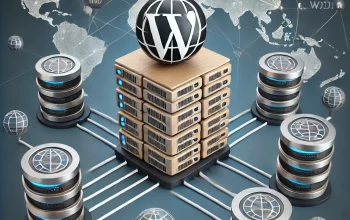WordPress development languages play a crucial role in building and maintaining websites. Whether you are creating themes, developing plugins, or customizing a website, understanding the right programming languages is essential. WordPress development languages include PHP, HTML, CSS, and JavaScript, each serving a specific purpose in the ecosystem. In this guide, we will explore these languages, their roles, and how they contribute to WordPress development.
Core Languages Used in WordPress Development
PHP in WordPress Development
WordPress is primarily built using PHP, making it one of the most critical WordPress development languages. PHP is a server-side scripting language that processes requests and generates dynamic content. Themes, plugins, and core functionalities rely on PHP to interact with databases and display content. PHP is used for creating custom functions, integrating APIs, and modifying WordPress core files.
PHP is responsible for processing form submissions, managing user authentication, and handling database queries. Without PHP, WordPress would not be able to function dynamically. Understanding PHP allows developers to create custom plugins, modify themes, and enhance WordPress functionality.
HTML in WordPress Development
HTML (HyperText Markup Language) is another essential WordPress development language. It provides the structure of web pages, ensuring that content is properly displayed in browsers. Every WordPress website relies on HTML to structure headings, paragraphs, images, and other elements.
WordPress themes and page builders generate HTML code, which determines how content is arranged. HTML is fundamental in creating well-structured and SEO-friendly pages. Learning HTML helps developers customize WordPress themes and optimize website content.
CSS in WordPress Development
CSS (Cascading Style Sheets) is crucial for designing and styling WordPress websites. Among WordPress development languages, CSS is responsible for controlling the visual appearance, including colors, fonts, spacing, and layout.
WordPress themes rely on CSS files to define styles. Customizing themes using CSS allows developers to create unique and visually appealing websites. Advanced CSS techniques, such as Flexbox and Grid, help in designing responsive layouts.
JavaScript in WordPress Development
JavaScript plays an important role in adding interactivity to WordPress websites. As one of the key WordPress development languages, JavaScript enhances user experience by enabling dynamic content updates without reloading the page.
JavaScript is used in WordPress themes and plugins for interactive elements such as sliders, pop-ups, and real-time updates. The WordPress Block Editor (Gutenberg) heavily relies on JavaScript, particularly React.js, to create customizable content blocks.
Additional Technologies in WordPress Development
MySQL in WordPress Development
MySQL is the database management system used in WordPress. It stores website data, including posts, pages, users, and settings. PHP interacts with MySQL to fetch and update data, making it an integral part of WordPress development.
jQuery in WordPress Development
jQuery is a JavaScript library that simplifies coding. It provides pre-written functions for animations, AJAX requests, and DOM manipulation. Many WordPress themes and plugins use jQuery to enhance functionality.
REST API in WordPress Development
The WordPress REST API allows external applications to interact with WordPress sites. It enables developers to create mobile apps, integrate third-party services, and build headless WordPress solutions.
Choosing the Right Language for Your WordPress Project
When to Use PHP vs. JavaScript
PHP is essential for server-side processing, while JavaScript is used for client-side interactions. PHP handles form submissions, database queries, and authentication, whereas JavaScript enhances user experience through interactivity.
Importance of HTML & CSS in Design Customization
HTML and CSS are fundamental for structuring and styling content. A well-structured HTML layout improves SEO, while CSS enhances the visual appeal. Both languages work together to create engaging WordPress themes.
Combining Languages for Advanced Development
Advanced WordPress development requires a combination of PHP, HTML, CSS, and JavaScript. Understanding how these languages interact helps developers create dynamic, responsive, and user-friendly websites.
Conclusion
WordPress development languages are essential for building functional and visually appealing websites. PHP powers the backend, HTML structures content, CSS enhances design, and JavaScript adds interactivity. Additional technologies such as MySQL, jQuery, and REST API further improve WordPress capabilities. Mastering these languages enables developers to create custom themes and plugins and optimize website performance. Whether you are a beginner or an experienced developer, understanding WordPress development languages will enhance your ability to create powerful websites.





